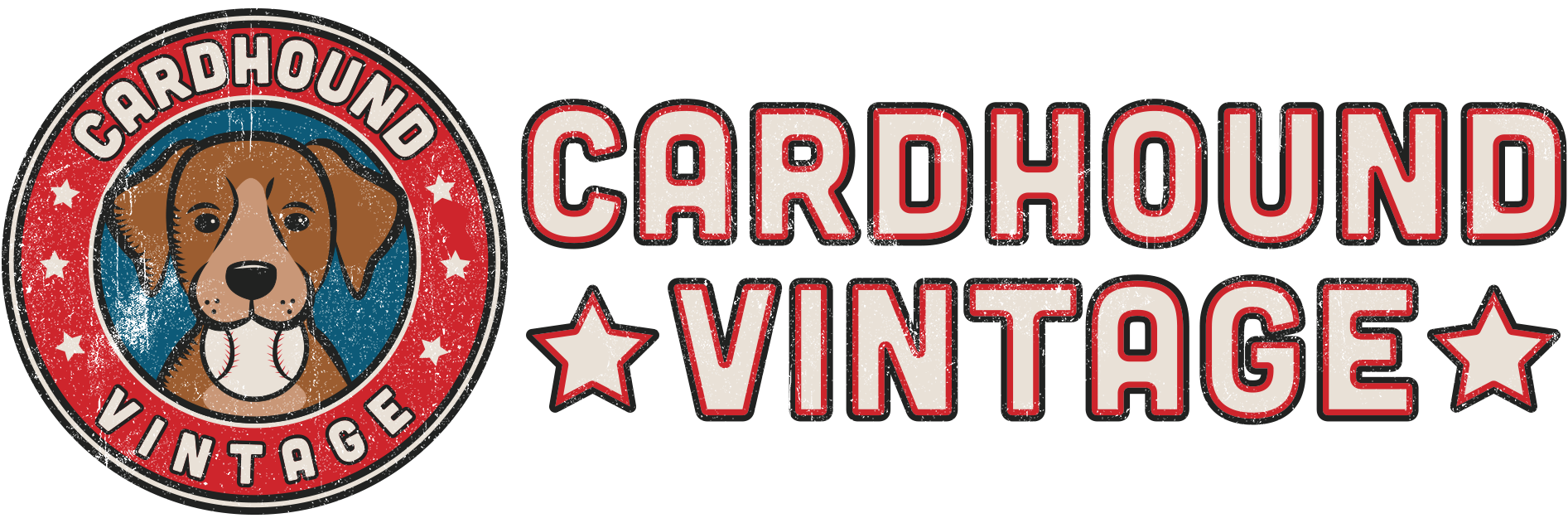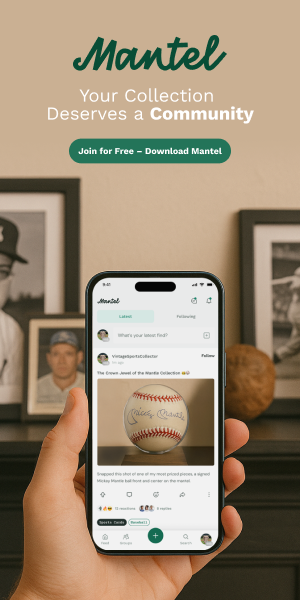You might think that with today’s grading and authenticating technology, counterfeits would be on the decline. But you would be wrong. According to CGC VP and lead grader Andy Broome, he still sees counterfeits daily.
Broome says “we see them nearly every day. I have seen counterfeit cards on a near-daily basis for over 20 years. I don’t think the average collector knows how big of a problem altered and counterfeit cards are in the hobby.” This article focuses on vintage cards, which have unique characteristics that are particularly difficult to forge.
If you want to become a relative expert in catching counterfeits, check out the Cardhound Vintage complete Guide on the topic. And if you want to hone your skills, I just opened up a free counterfeiting workshop on my Forum.
But if you’re walking a show or window shopping online and just want the absolute basics, here are some quick tips:
1. Know your fakes
There are many commonly-faked cards in vintage: ’52 Mantle, ’63 Rose, ’68 Ryan, and ’86 Jordan being a few examples. Any card can be counterfeited, but if you have red flags and the card you’re considering is known to be commonly faked, walk away.
Here’s a fake ’68 Topps Ryan that was submitted to CGC that was caught in the grading process. It’s actually one of the better counterfeits I have seen of this card, but the color is noticeably off:
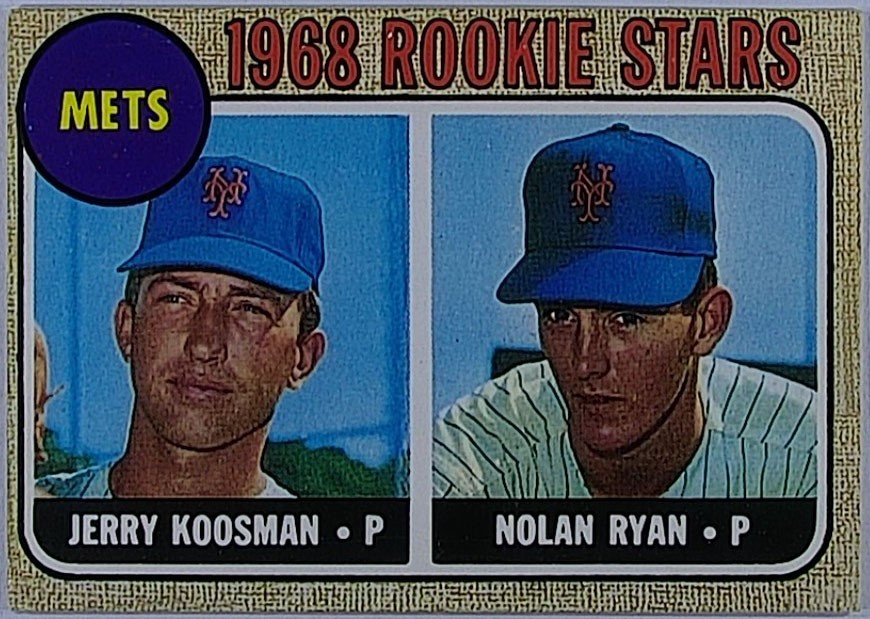
2. Rosette printing
Vintage cards were printed using a halftone technique that resulted in a distinctive “honeycomb” pattern when viewed up close. Full-color images were broken down into tiny dots of four primary process colors: Cyan (C), Magenta (M), Yellow (Y), and Black (K).
Called a “rosette pattern,” it is impossible to duplicate with modern printers. Note that the black area, solid ink, is free from printer dots. On counterfeit cards, the rosette will look blurry and muddled–not crisp and clear as seen here on a real Ryan. And those areas of solid color will have visible printer dots from a modern printer.
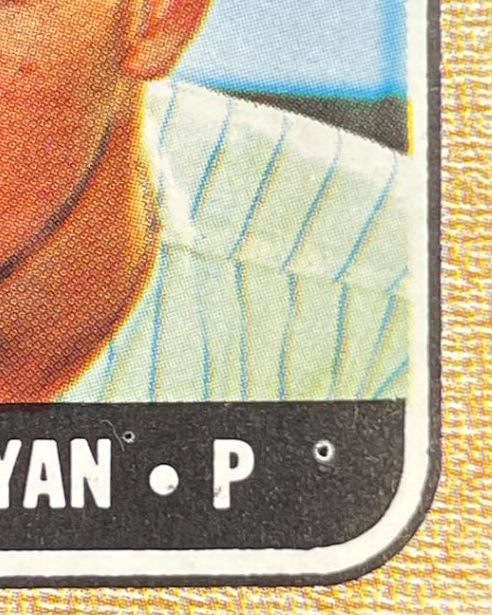
3. Bad stock
Vintage cards were generally printed on sturdy, thick cardboard with matte backs and a textured front. Thin stock, white edges, super glossy fronts, or smooth, glossy backs are warning signs. Perfect centering is another tell.
Light passing through is a bad sign for most years of Topps cards. Here’s another look at the counterfeit caught by CGC:
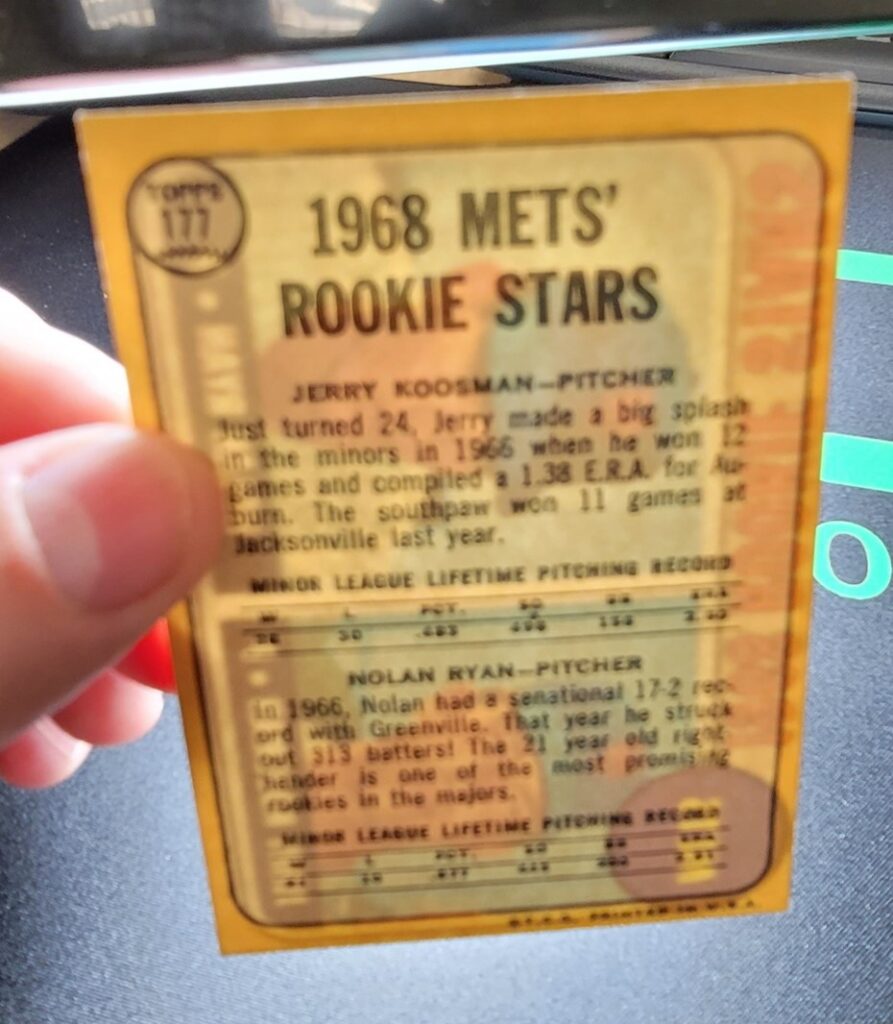
4. Fake aging
Counterfeits are often soaked in tea or coffee or have uniformly-worn corners from sandpaper or a Dremel tool. In this case the edges on the CGC subbed card are just too clean. But more telltale, they have been colored from modern white to a “tan” color meant to mimic vintage cardboard:
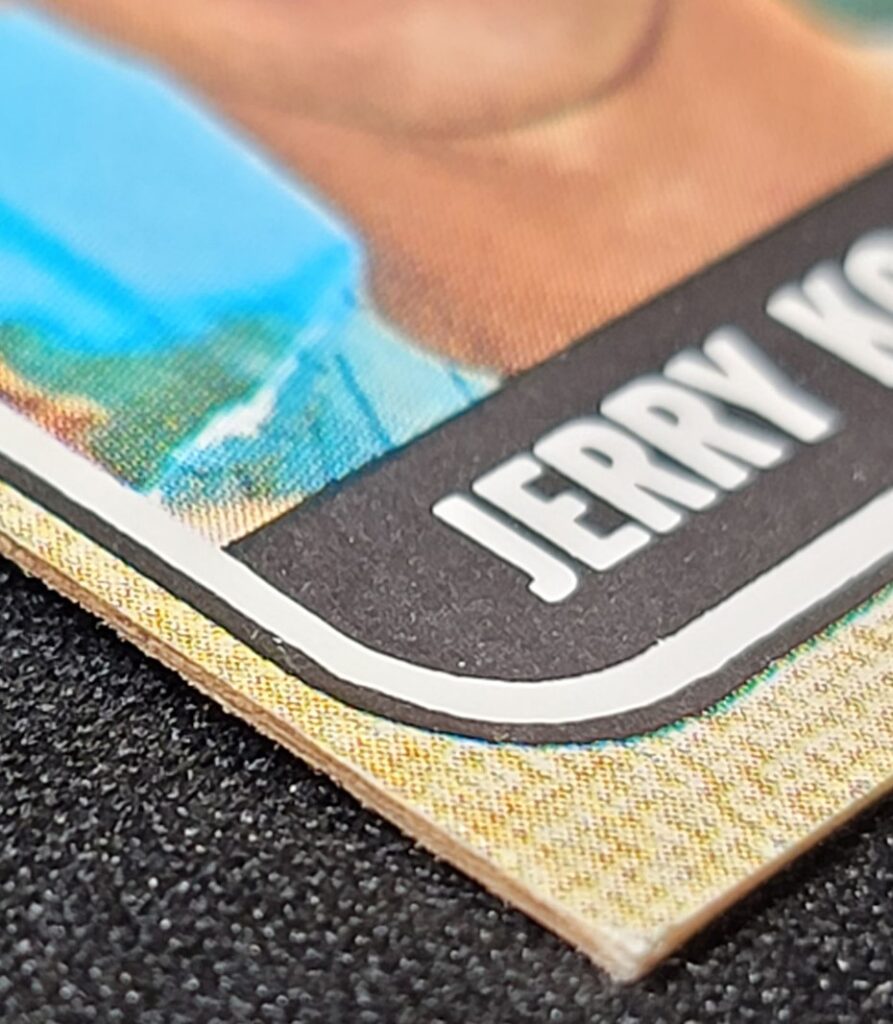
5. If it seems too good to be true…
You know the old saying: if the deal seems too good to be true, then it probably is. Most counterfeit listings involve a story of cards passed down by grandpa, that need to be sold now, and for cheap.
On eBay, counterfeits will often be listed in lots to avoid authentication, or will use the phrases “RP” or “Novelty” in the fine print.
If you do not feel comfortable in your ability to spot a fake, it’s best to buy a graded card, or bring along a trusted hobby expert to help you shop.
